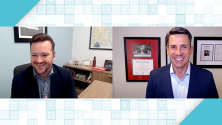Although a lot has changed about the job interview process over the years, basic interview etiquette rules still apply. Be polite. Don’t lie about your experience. Send a thank you note. Follow up with hiring managers to stay top of mind. Avoid wearing a Darth Vader costume to your interview. (The last one should go without saying, but based on CareerBuilder’s annual survey on interview mistakes, at least one person could have used this tip before their interview.)
Classic advice like this holds true today, but in the digital era, there are nuances that job seekers should keep in mind. For instance, candidates no longer have to snail mail their thank you letters – email is instantaneous. But how soon is too soon – the next day? When they are leaving the building? Is texting OK?
We tapped experts to answer these and other pressing questions about job hunting rules and follow-up etiquette for 2019. Here’s their advice and updated best practices for job seekers.
[ Crush that interview. Download: IT job searching in 2019: A practical guide. ]
On looking the part
A video interview could happen at any point in the interview process – whether or not you are applying for a remote position. It may be your first impression, in lieu of a phone screen. Or it could be with the CEO who is based in a remote location. Either way, you’ll need to be prepared.
“A job hunt trend that has changed is the prevalence of video interviews, especially with many employers hiring remote workers,” says LaCinda Clem, executive director of technology staffing services for Robert Half. “Video interviews are quick and easy to schedule, and it gives you the chance to display your personality and professionalism better than over the phone. However, video interviews require more preparation than a phone interview. Make sure you set up in a professional-looking space with a plain background, dress as if you’re going to an interview, and make sure your technology works,” she advises.
[ See our related article: How to interview for a remote IT job. ]
On thank you notes
Sending a thank you note is interview advice 101, yet surprisingly, more than half of candidates skip this step, according to CareerBuilder.
“A proper thank you expresses to the recruiter or hiring manager that you valued their time and conversation about the company and position,” says Erika Stark, principal recruiter from HCM company, Paycor.
It needn’t be a lengthy note or hand-written endeavor, Stark says. A simple email is all that’s needed to stand out from candidates who don’t bother to take this action. “An email can quickly convey your continued interest in the role, or even give you a chance to elaborate on a subject you feel needed further clarification during the interview,” she says.
While a thank you letter could set you apart from other applicants, a sloppy thank you letter could set you back. “Regardless of how you send them, it’s important to get another set of eyes to review your follow-up note to check for spelling or grammar errors,” says Brandon Parezo, team lead of technology recruiting services at LaSalle Network, a national staffing, recruiting, and culture firm. “Otherwise, you should spell check in a Word doc. Don’t overlook this. You’d be surprised how many thank you letters have grammar and spelling errors that could have been easily fixed if they were glanced at once more before being sent,” he cautions.
As for when to send a thank you note, most of the experts we consulted for this article agreed that it should be sent within 24 hours.





